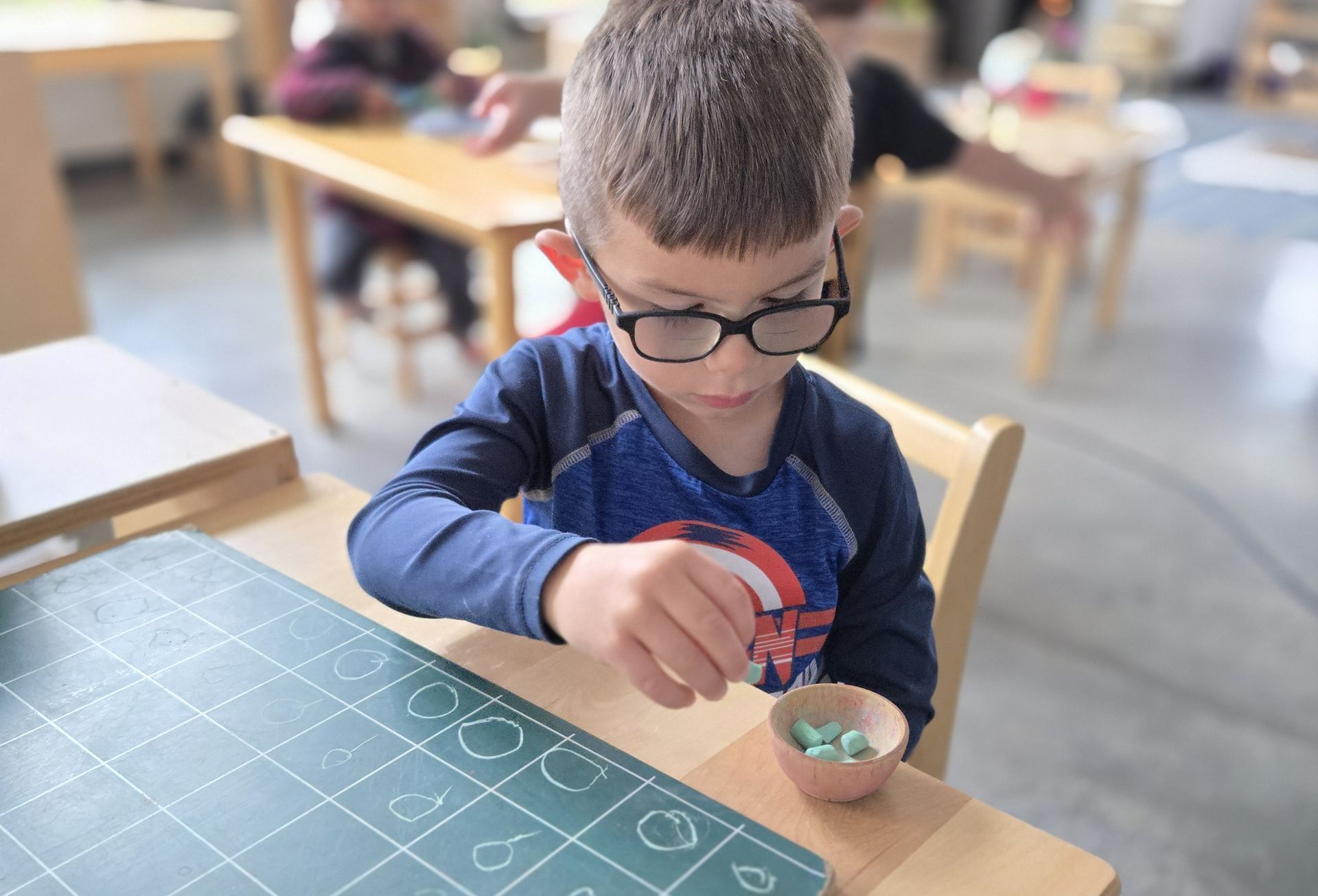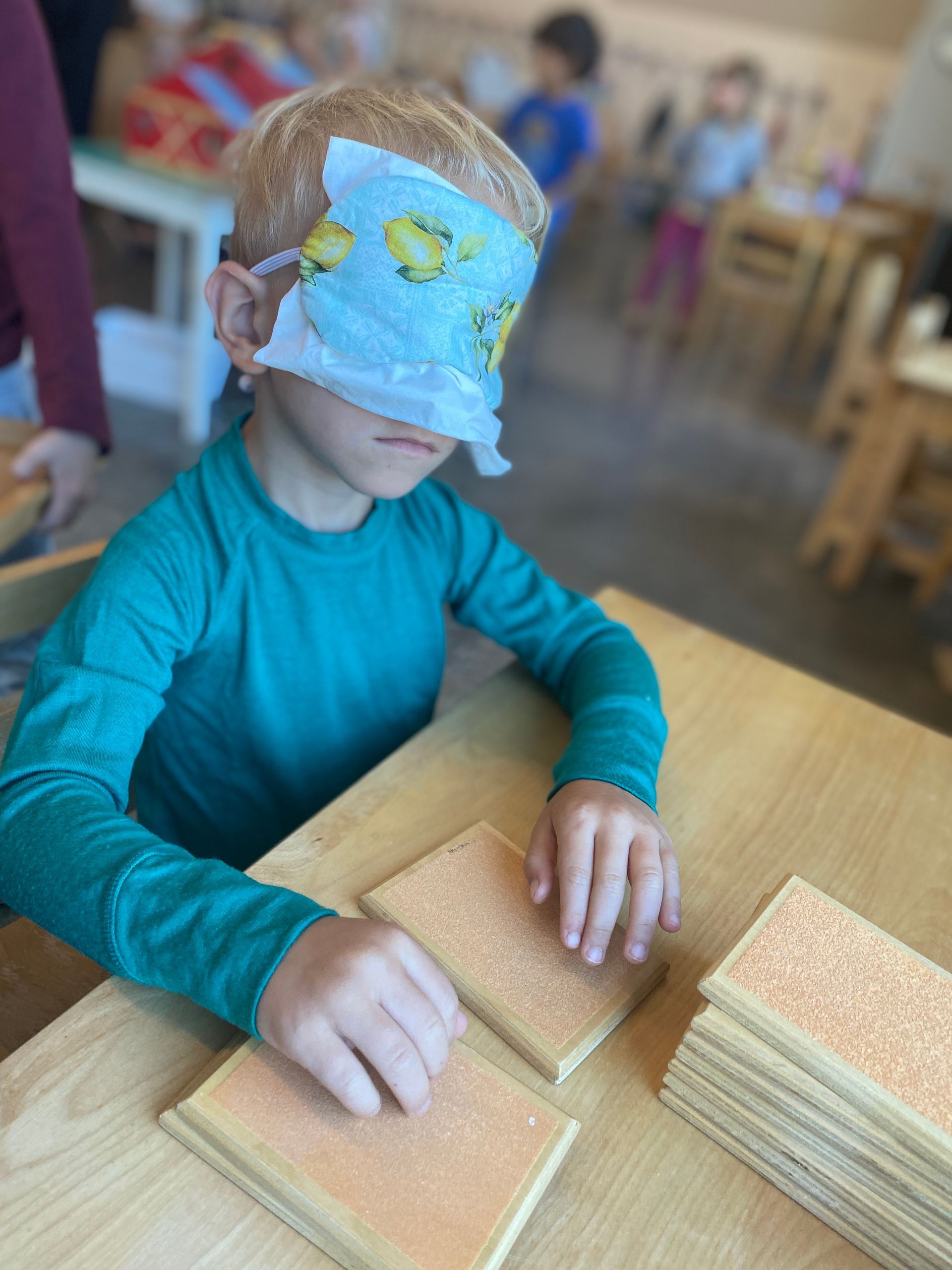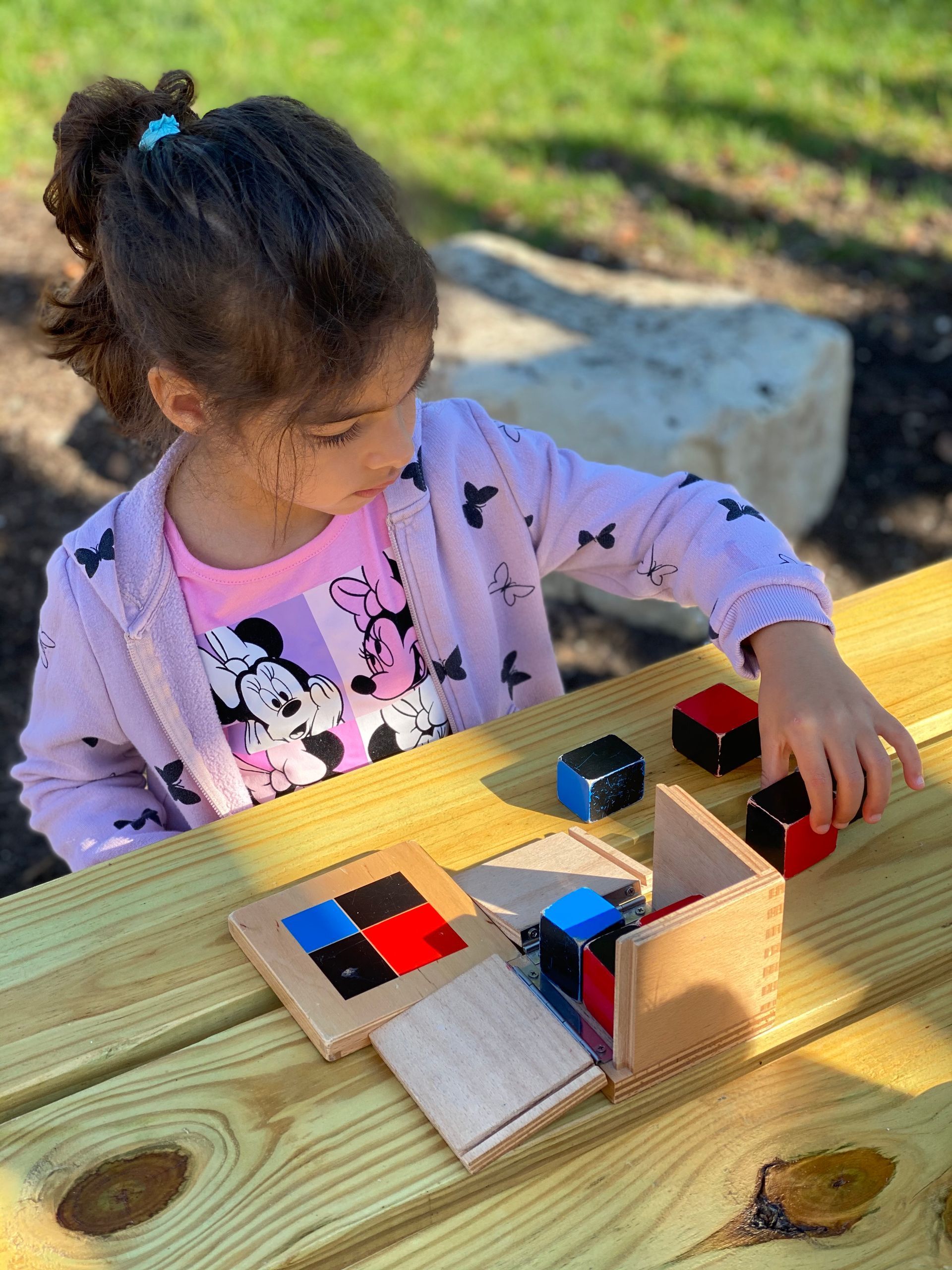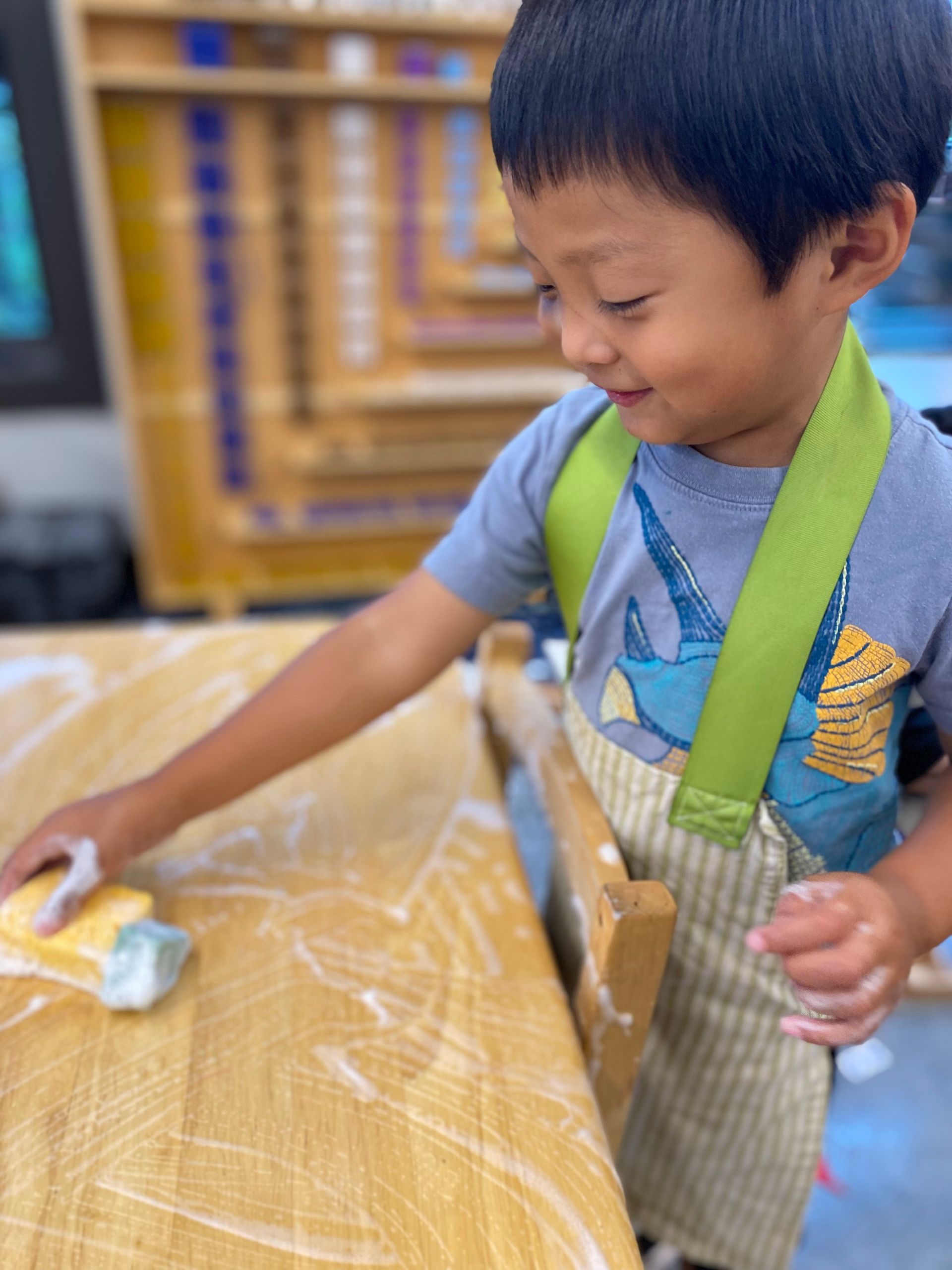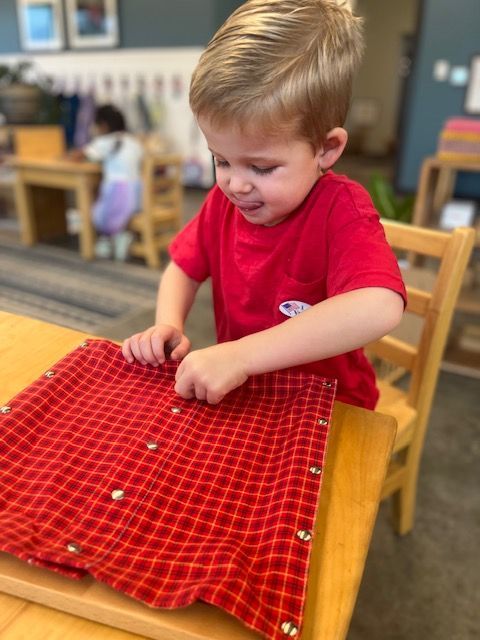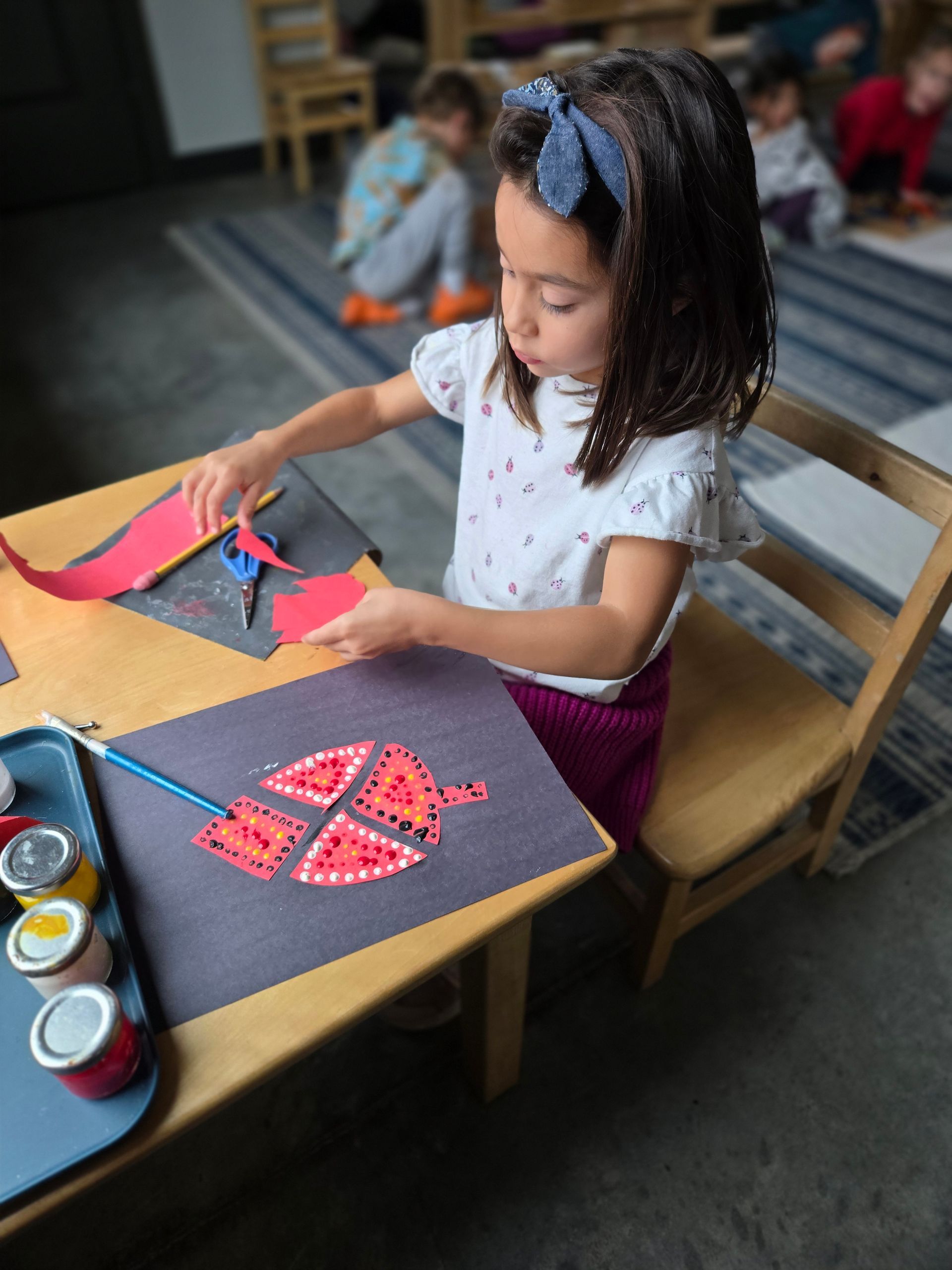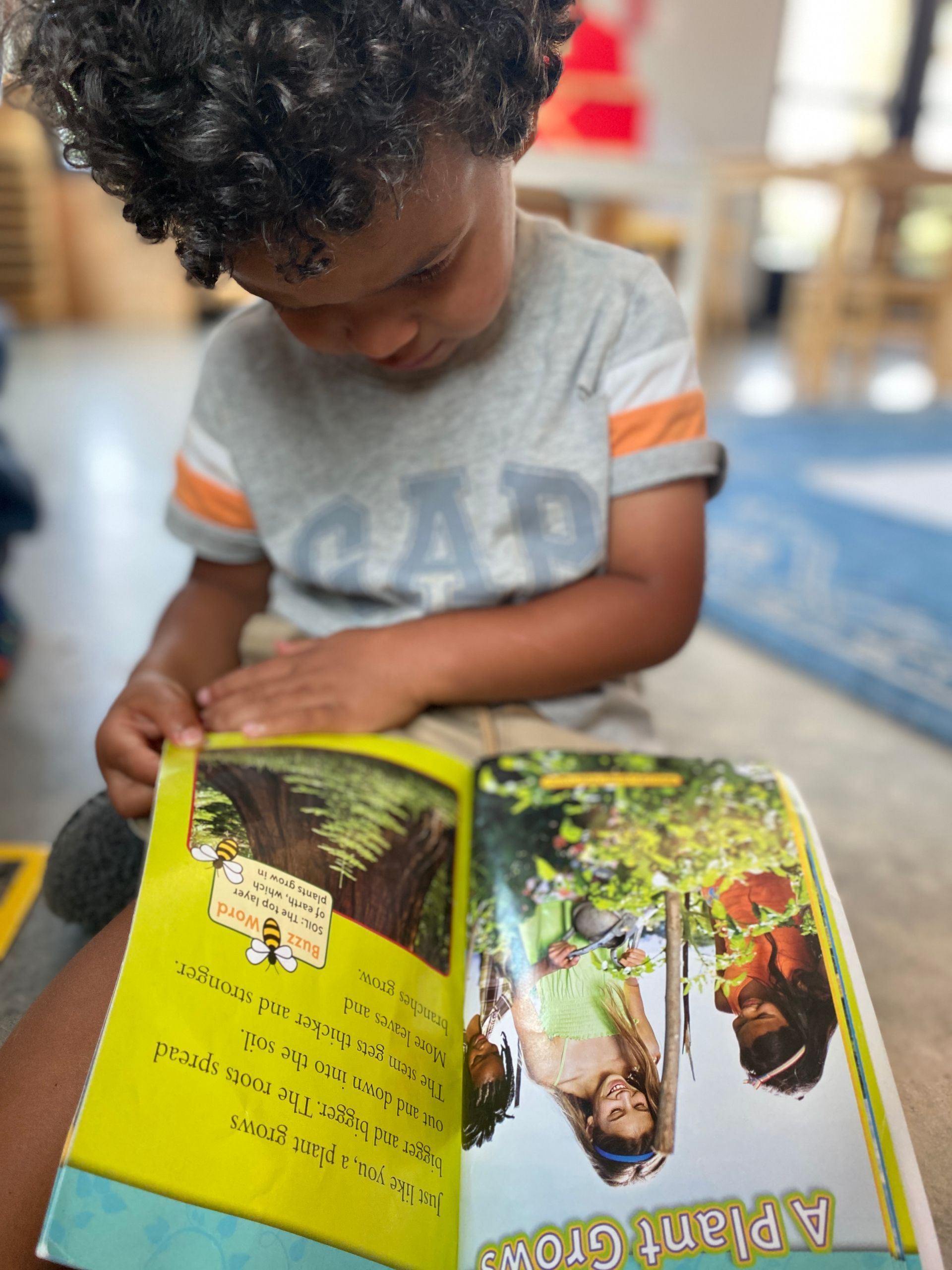“The teacher shows the child how to use the materials, how to wash himself, but it is the child who handles the material, perfects himself in his exercise, and keeps his face clean of his own accord. Thus he is both active and free, and from these two factors is created that vital quality of a strong character: internal discipline.”
MARIA MONTESSORI
As part of our enrollment process, prospective parents join us for a classroom observation. This is a wonderful opportunity to see the classrooms in action. Parents observe as the directress gives lessons and children choose their work. It’s also interesting to listen to the children’s conversations, watch how they clean up after themselves and witness the collaborative work of the children’s community. After the observations, often parents will inquire about discipline in the classroom and how is it handled. Parents observe a classroom of 30-32 children all working peacefully, resolving any personal conflict. How can the environment possibly be this peaceful and how did it get that way?
Discipline in the Montessori classrooms is universal, consistent and consequences are natural (good or unfortunate). The rules are the same for every child. Each child must see her chosen work through to completion; clean up a mishap of a spill or wait for a lesson to be given on a material. Additionally, the children must wait for a desired work to be available if it’s in use by someone else, only eat snack at the snack table and hang up their coats when they arrive. All of these classroom rules apply to each child. With the classroom containing mixed ages, there isn't a need for the adult to be the sole enforcer of the rules. Many older children will lead the younger ones in this way. We especially love the policing from the 4-year-olds! They will remind a new friend they need to wait for a lesson or sit down at the snack table when they are eating. If an adult overlooks a child who did not clean their Bread Baking dishes, it’s a guarantee to the next child who wants to bake bread, that he will follow up with the child. These rules will also be applied to each child every single time without an inconsistency. A classroom structured with inconsistent rules will only lead to children not following them or questioning the outcome each time. If this takes place, the classroom order will surely fall apart.
The consequences in the classroom are natural. This is true even for adults. Our actions have consequences. If a child works hard on mastering a material, she is able to move on to the next. If a child does not put his work away, the next work cannot be chosen. The more strong-willed children will test out the universal rule. While they are doing so, they find that the classroom (and directress) continues on without them. This is a natural consequence of choosing not to put your work away – you cannot choose anything else. Not all consequences are negative. If a child needs movement for her body, she may be invited to a work with large movement or play a distance game with a certain material. If a child talks kindly to others and is helpful, in return other children will enjoy the company and wish to be near. A directress cannot lack discipline and successfully run a classroom. These universal laws of the classroom must be established and consistent. When the rules apply to everyone, are consistently implemented and consequences are natural, the classroom will function as it should be. This is why when our prospective parents observe, they note the strong order and peaceful workings of the Montessori children.

